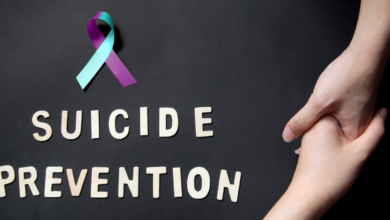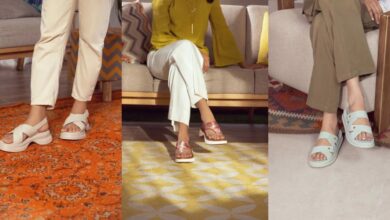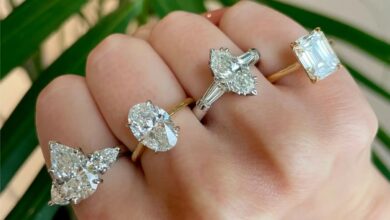Visual Hierarchy for Beginners 2023

The arrangement of items in a certain sequence to focus attention on specific regions is known as a visual hierarchy. Visual hierarchy, which is frequently utilized in UX design, makes it easier for readers to navigate and helps focus their attention where you want it to be.
Posters and advertisements frequently use visual hierarchy to help draw attention to desired elements.
Visual Hierarchy Broken Down
Visual hierarchy may be broken down into more understandable sections to assist designers to describe their approach to a design concept. The visual hierarchy has three main roles, two of which are closely connected.
Size
Objects can be made larger or smaller to assist draw attention to them or away from them. This impact will be diminished if there are too many items of comparable sizes used since nothing will stand out as much. To illustrate how it compares to other items, scaling sizes is essential.
Scaling emphasizes how your greatest object contrasts with smaller ones by establishing a feeling of equilibrium. Smaller text will keep unimportant information out of the way and place it where users will view it last, keeping it out of the way and out of the way.
Colors & Contrast
More vibrant colors are better at drawing attention. When vivid colors are used with darker backgrounds, this impact is amplified. The result helps your material stand out more and easily captures attention.
Despite being two components of the visual hierarchy, color and contrast perfectly complement one another to grab the viewer’s attention. This technique may be used, for example, to change the color of a text by boldly highlighting it; this will draw attention before any other text that is a dull color.
The attention is drawn in stronger when the contrast is larger. The majority of aesthetics use great contrast to produce magnificent works, and good UX design makes extensive use of contrast.
The F & Z Patterns
When it comes to text-based information transmission, there are two major patterns that best make use of how humans understand visual information. These patterns work in the majority of languages because English words are read from top to bottom and from left to right.
The F Pattern
For patterns with a lot of text, the F pattern is the best option. The layout moves over to the right, starting at the top left of the letter that bears its name. The observer then looks along the spine for headlines or subheadings.
Although the F-pattern is more recognizable, the pattern is also known as the E-pattern. With this layout, the monotony of reading long paragraphs of text is effectively eliminated. Users can scan the headlines for any attention-getting headlines or bullet points by doing a quick scan.
The Z Pattern
The Z-pattern is ideal for advertisements or websites with only a few paragraphs of content. The top left of the design is where the most important information is placed, followed by the top right, bottom left, and bottom right in order of significance.
Typically, a logo goes in the upper left corner because it will be the first thing visitors see. After consumers have viewed the corporate logo, a call to action is placed in the upper right corner. In this scenario, a registration prompt serves as the call to action.
An image generally appears in the center of the design to fill the space. All of the content or information you wish to display to your visitor is at the bottom left and right.
Understanding Typography
Typographic hierarchy is simple to comprehend and applies to virtually any design that uses a lot of text. It may be divided into three sections, with the title coming first, followed by the subheads, and then your text.
Your headlines are the most visible material, include the most important information, and are positioned at the top of your design. Your subheadings organize all of your material and provide the disorganized paragraphs with some structure. Users may easily navigate using subheadings to access specific information.
Your content, which often consists of paragraphs, is the final component. Although tiny, the text size should still be readable. Users should find it simpler to browse your thick content after reading the two parts before this one.
The Importance of Spacing
Leaving a lot of space around crucial information on websites with little content will drive attention to the middle, where there is most of the room.
This idea should be used in all of your other designs as well because giving your users too much information will make for a bad experience. The use of space around text creates a straightforward and clear UX design.
A design that feels crowded with details and leaves little room around key features may confuse viewers and make them feel overwhelmed. Users always have the option to exit your website if they become confused, so make sure you only display crucial information.
Using Alignment
Aligning your designs is crucial since text that is positioned arbitrarily will seem cluttered. It is ideal to align to the left when creating a visual design with text as the focal point.
Aligning every piece to the center of a design’s plane generally results in a pleasing aesthetic for purely visual, minimalist designs.
Read more: 5 Reasons for HydraFacial Treatment for Winter
Using Grids
Grids are a frequent tool used to facilitate the construction of designs. By using the rule of thirds, you may give your designs more balance.
Add a grid to your design and set it on two horizontal and vertical lines to apply the rule of thirds. The end product offers a beautiful and easier-on-the-eyes design. The focus will first be on things that are near the center, and it will last on things that are far away.
Proximity and Relation
Your reader will presume a connection between pieces if they are placed near together. This might assist you in organizing a lot of information and make it simpler for your audience to grasp.
Readers will identify the two together since the visuals and words are grouped, indicating their relationship. If a picture and text are placed far apart, the reader will assume that the two are independent and have no bearing on one another.
Fonts and Visual Hierarchy
You may draw attention to essential pieces of information by changing the font size and designating bigger fonts for them. Names should be printed on a poster in one of the bigger font sizes, while details like an address should be placed in a smaller font.
Moving past font size, and adopting several font styles will assist draw users’ attention. Titles, subheadings, and informational content should all be in a separate typeface. By using this design strategy, you may give your writing the extra spark it requires to grab and hold readers’ attention.
Visual Hierarchy Tips
Making a few notes before you begin designing might help you organize your work and perhaps inspire more aesthetically pleasing ideas. Make a list of the information that needs to be prioritized, along with the strategies you’ll employ to do so.
Do not undervalue the value of effective UX design since the extra labor is always worthwhile. Consider the reader’s journey as you work to enhance the UX design and eliminate any unnecessary information.
Wrap Up
The goal of visual hierarchy is to direct the reader’s attention in the direction you want it to go you want the most important information to be seen first, followed by everything else. Contrast may make colors stand out and become the first element of a design that readers notice.
Knowing which information you want readers to see first will help you make the best use of the visual hierarchy and offer others a good user experience.












One Comment